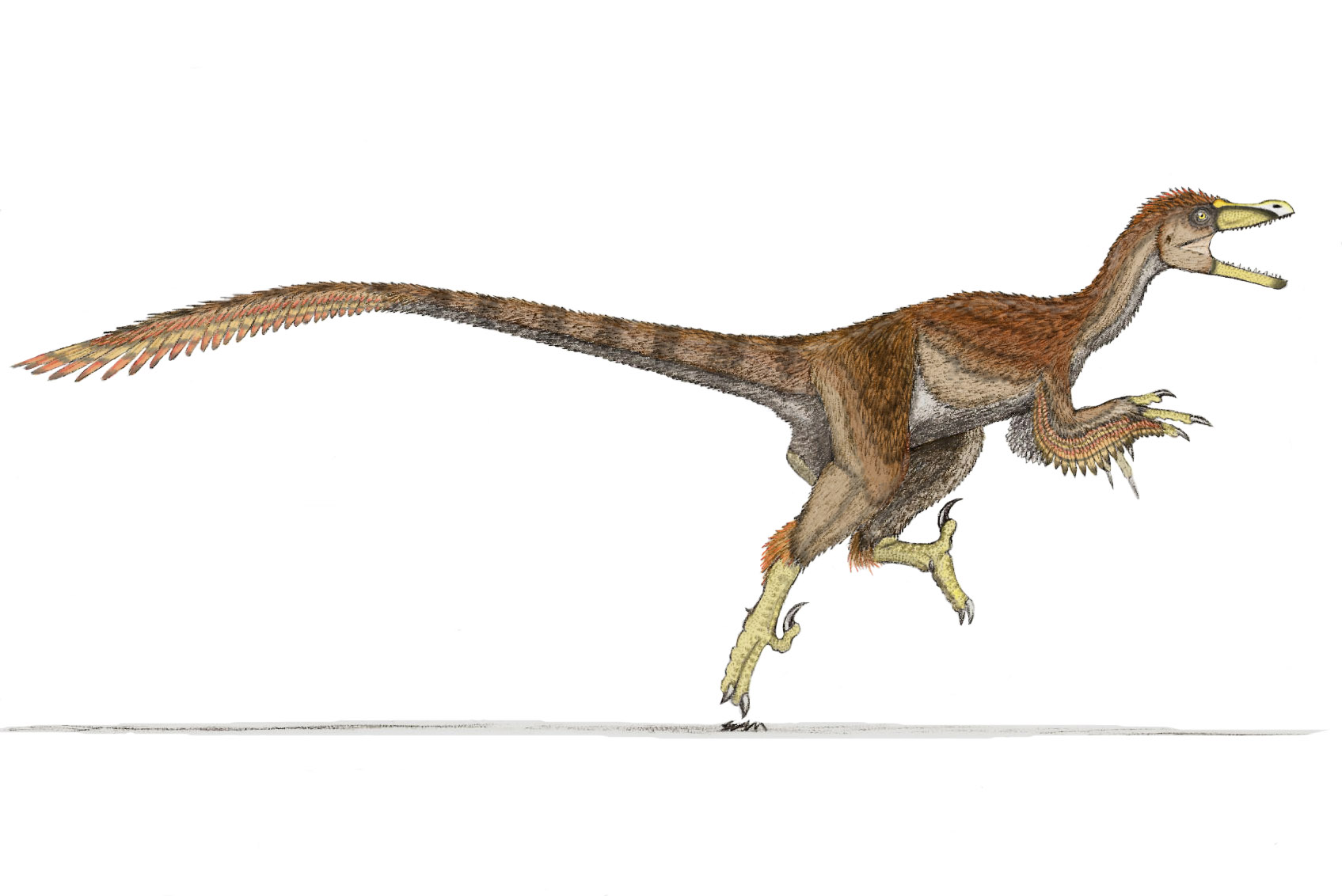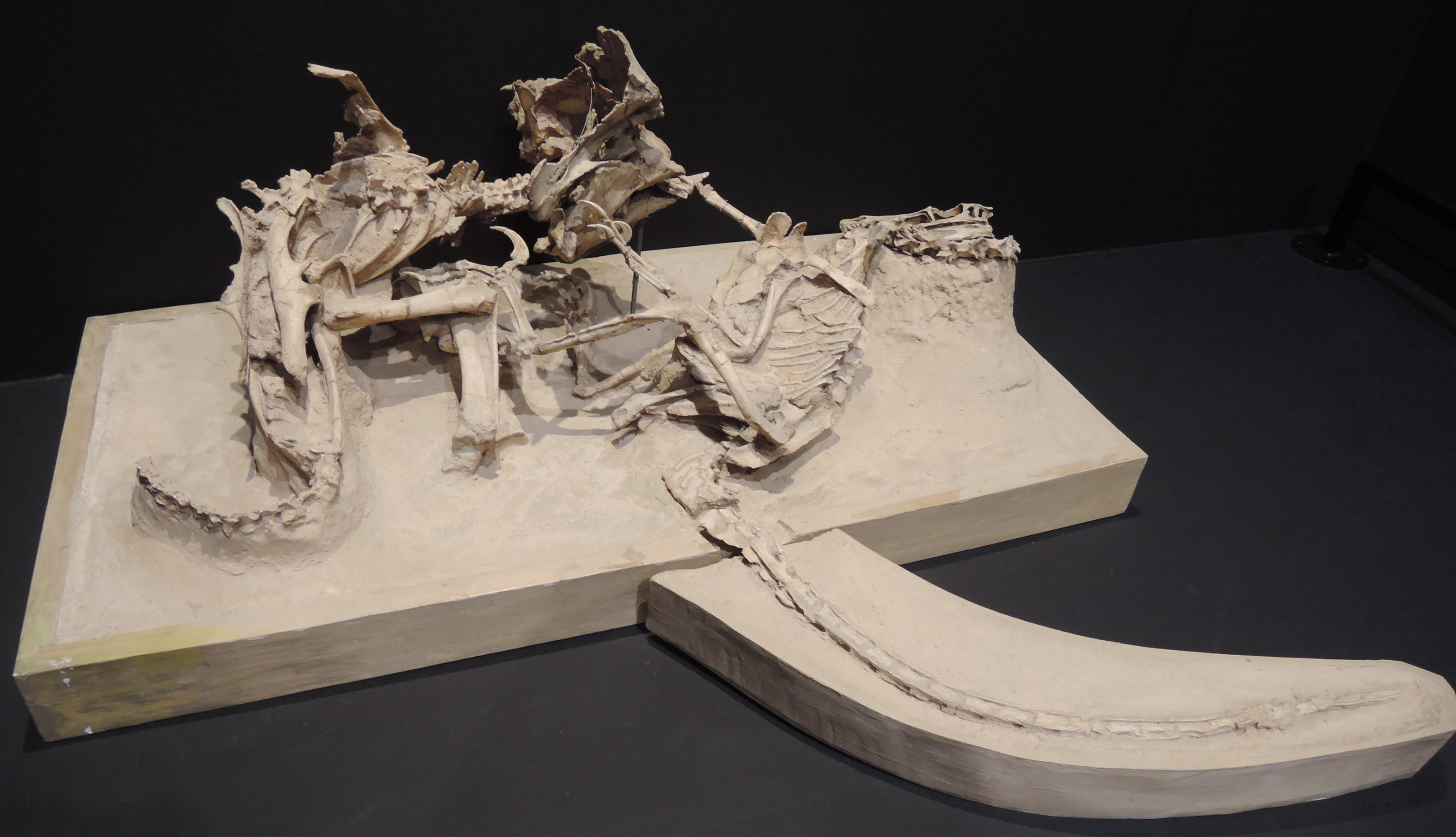Interactions

As discussed in the Form and
Function section, Velociraptor mongoliensis was a fast, agile and successful
predator. The backwardly curved, serrated teeth of
V. mongoliensis
have been found embedded in many fossil specimens, however, perhaps
the most indicative and undisputable evidence of this theropod’s
predatory nature is displayed by the famous “Fighting Pair.”
“The Fighting Pair”
In 1981, a Polish-Mongolian paleontologist team uncovered the intact
fossil remains of a Velociraptor and a Protoceratops caught in
battle. The Protoceratops appears to have been crouching as the
Velociraptor attacked. The le ft
arm of the Velociraptor is covering the face its prey as the right
forearm is caught in between the beak of the Protoceratops. The
neck of the V. mongoliensis
is stuck in a characteristic, tight S-curve. The sickle claw of the
left foot is extended into what would have been the neck of the
Protoceratops, while the right leg of V.
mongoliensis appears to be
stuck under the body of the Protoceratops. This fossil specimen
paints an interesting picture as to how the battle played out. It
can be interpreted that the Protoceratops bit down on the right arm
of the V. mongoliensis, collapsing as
V. mongoliensis used it’s
sickle claw to pierce the jugular vein of the Protoceratops.
Velociraptor was then trapped under the weight of its massive prey.
It is thought that the two dinosaurs were preserved so exquisitely
due to a sand slide covering the two of them shortly after battle
(Carpenter. 1998).
ft
arm of the Velociraptor is covering the face its prey as the right
forearm is caught in between the beak of the Protoceratops. The
neck of the V. mongoliensis
is stuck in a characteristic, tight S-curve. The sickle claw of the
left foot is extended into what would have been the neck of the
Protoceratops, while the right leg of V.
mongoliensis appears to be
stuck under the body of the Protoceratops. This fossil specimen
paints an interesting picture as to how the battle played out. It
can be interpreted that the Protoceratops bit down on the right arm
of the V. mongoliensis, collapsing as
V. mongoliensis used it’s
sickle claw to pierce the jugular vein of the Protoceratops.
Velociraptor was then trapped under the weight of its massive prey.
It is thought that the two dinosaurs were preserved so exquisitely
due to a sand slide covering the two of them shortly after battle
(Carpenter. 1998).
While “The Fighting Pair” provides indisputable evidence that
V.
mongoliensis was a predatory dinosaur, it raises many questions as
to how such a small dinosaur could effectively take down such large
prey. Although it is possible that V. mongoliensis went after large
prey that appeared weak or already injured, it is perhaps more
plausible that V. mongoliensis hunted in packs, much like wolves and
hawks do. Wolves hunt
in packs so that they can take on much larger prey than they could
effectively kill on their own. Velociraptor might have behaved in a
similar fashion. So in the case of “The Fighting Pair,” one might
ask “If Velociraptor hunted in packs, why wasn’t the rest of the
pack buried in the sand slide?” Possibly, the pair was buried
before the other Velociraptors had a chance to come in to help.
Unfortunately, despite being provided with such an amazing window
into the past as “The Fighting Pair,” it is still really hard to
tell.

For some additional information, see our fun
facts page!